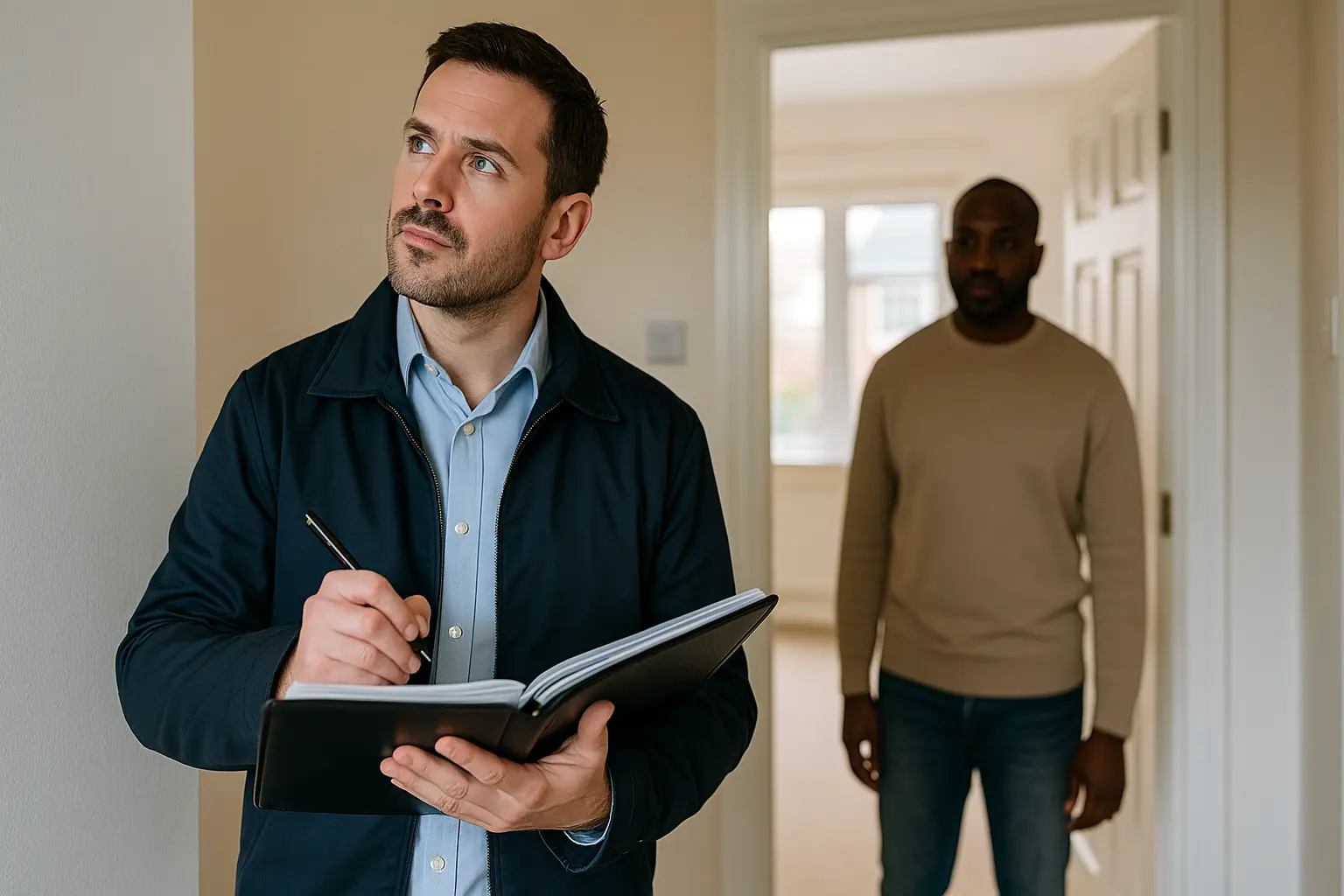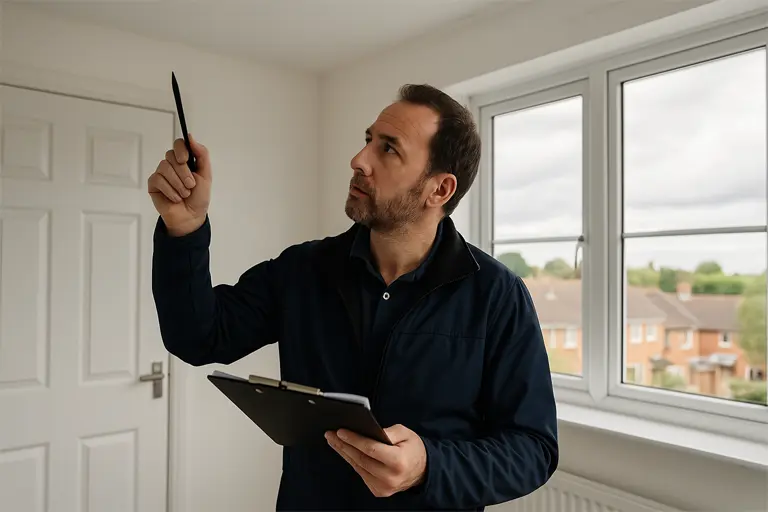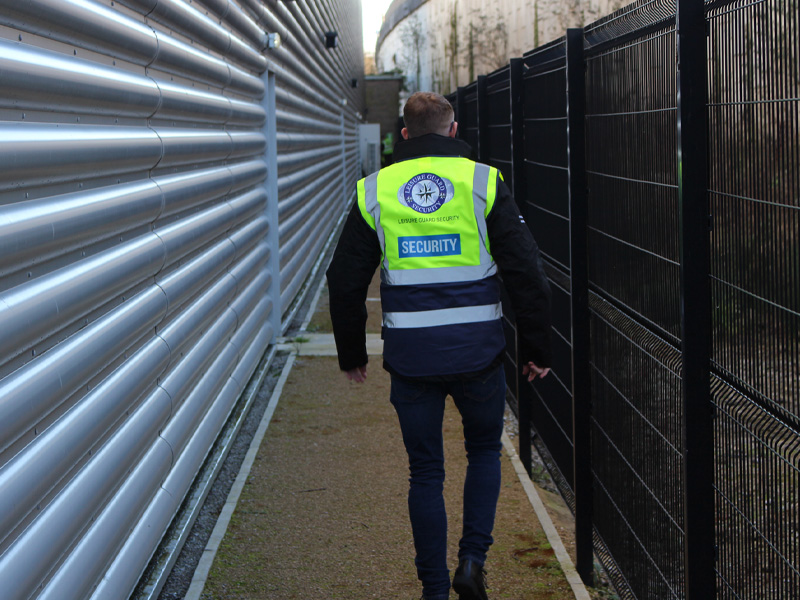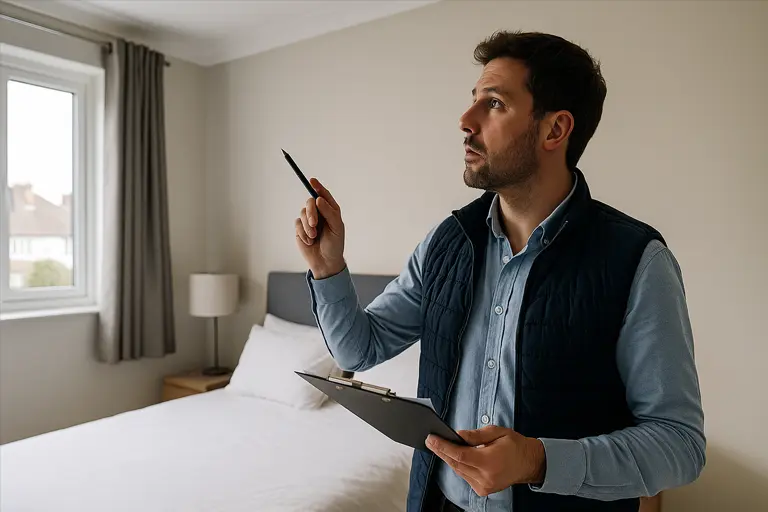If you rent out residential or commercial property, one question could save you thousands:
When was your last inspection?
Rental property inspection services are the unsung hero of professional property management. Whether you’re a private landlord or a letting agent managing a portfolio, routine inspections are the key to safeguarding your investment, protecting tenants, and staying compliant with UK housing law.
Missed leaks become collapsed ceilings. Unchecked tenants turn into overcrowding, unauthorised pets, or worse. And in some cases, a lack of inspections can even result in voided insurance claims or serious legal trouble.
In this guide, we break down everything landlords and agents need to know about rental property inspection services in the UK, including:
- ✅ What inspections cover (and why they’re not just about cleanliness)
- ✅ When and how often inspections should take place
- ✅ Your legal rights, and your tenant’s
- ✅ The pros and cons of outsourcing vs doing it yourself
- ✅ Pricing, packages, and what to expect from a professional service
- ✅ Real-world risks you can prevent (including illegal cannabis farms)
We’ll also answer the most common landlord FAQs and share helpful templates, checklists, and legal insights to help you stay in full control, without breaching tenant rights or burning your weekends.
Let’s start with the basics.
Rental property inspection services are professional mid-tenancy visits that assess the condition, safety, cleanliness, and compliance of a property currently occupied by tenants.
They’re typically carried out:
- During the tenancy (not just at move-in or move-out)
- On a scheduled and legally compliant basis
- By either the landlord, letting agent, or a trained inspection provider
These inspections aim to:
- Identify damage, maintenance needs, or health and safety risks
- Ensure the property is being properly looked after
- Provide a documented record of the property’s ongoing condition
- Spot potential issues like illegal use, unauthorised occupants, or fire hazards
📌 While some landlords choose to carry out inspections themselves, many now prefer to outsource the task to professionals, especially for legal protection, documentation, and time efficiency.
How Rental Inspections Differ from Inventories
| Feature | Rental Property Inspection | Inventory Check |
|---|---|---|
| Purpose | Assess current condition during tenancy | Document condition at start or end of tenancy |
| Timing | Mid-term (every 3–6 months) | Move-in and move-out dates |
| Tenant Present | Usually yes | Optional |
| Focus | Maintenance, cleanliness, potential issues | Detailed contents and condition report |
| Outcome | Photo-backed report with repair recommendations | Baseline for deposit deductions or dispute resolution |
| Use in Legal Disputes | Proof of due diligence or tenant breach | Key evidence in deposit claims |

For landlords and letting agents, inspections aren’t just “nice to have”, they’re a core part of risk management, legal compliance, and asset protection.
While it’s tempting to take a hands-off approach during a long-term tenancy, the reality is this:
🔧 The sooner you catch a problem, the cheaper and easier it is to fix.
And property problems; left unchecked, rarely stay small.
🚨 What Can Go Wrong Without Regular Inspections?
- Leaks and damp can cause thousands in structural damage
- Electrical issues may go undetected until they pose a safety hazard
- Pest infestations can spread and ruin tenant satisfaction
- Tenant neglect can result in hygiene issues, hoarding, or damage
- Illegal activities, such as cannabis cultivation or subletting, can happen without your knowledge
- Insurance claims can be denied if you can’t prove due diligence
Many landlords discover issues only when a tenant moves out, by which time the damage has already snowballed, turning a £150 repair into a £5,000 renovation.
The Benefits of Mid-Term Inspections
Here’s why inspections should be part of your routine landlord practice:
✅ Preventative Maintenance
Spotting issues like mould, plumbing faults, or broken fittings early helps avoid costly repairs and keeps the property safe.
✅ Legal & Insurance Compliance
Regular checks demonstrate due diligence and may be required by insurance policies to validate claims, especially in vacant or high-risk properties.
✅ Tenant Accountability
Knowing that inspections will occur at agreed intervals encourages tenants to treat the property with care and report maintenance needs early.
✅ Property Value Protection
Long-term wear and tear is inevitable, but proactive maintenance ensures your asset retains its market value and rental appeal.
✅ Reduce Voids & Disputes
Keeping a property in good condition helps retain tenants, reduce complaints, and resolve issues before they turn into legal battles.
🧠 Did You Know?
A 2024 report by Total Landlord Insurance found that over 70% of serious property damage claims involved homes that had not been inspected in the previous 6 months.
Landlord Property Inspection Services
Stay compliant, avoid costly surprises, and protect your property from just £80 + VAT.
Get started with a free consultation today.
What’s Included in a Professional Property Inspection?
When you hire a professional inspection service, you’re not just getting a quick walkthrough, you’re getting a detailed, systematic evaluation of your property’s condition, often backed by time-stamped photos, digital reports, and legal-ready documentation.
A well-conducted inspection checks far more than surface-level cleanliness. It uncovers hidden risks, tracks deterioration over time, and provides the paper trail needed for legal and insurance purposes.
🔍 What Do Inspectors Actually Check?
Here’s what’s typically covered during a standard mid-term or periodic rental property inspection:
| Area Inspected | What’s Checked |
|---|---|
| Interior Rooms | Cleanliness, wall condition, flooring, damage, signs of neglect |
| Kitchen | Appliances, extractor fan, worktops, signs of leaks or blocked sinks |
| Bathroom(s) | Mould, damp, plumbing condition, water pressure, extractor fans |
| Windows & Doors | Locks, hinges, sealant, broken glass, ventilation |
| Smoke/CO Detectors | Functionality, presence, and expiry dates |
| Plumbing & Electrics | Signs of leaks, damaged sockets/switches, visible wiring hazards |
| Heating System | Radiator damage, boiler access, thermostat checks |
| Loft or Attic Space | Signs of water ingress, pests, or illegal modifications |
| Garden / Exterior Areas | Rubbish buildup, overgrown vegetation, damage to fencing or outbuildings |
| Tenant Compliance | Signs of unauthorised occupants, pets, smoking indoors, or illegal use |
Professional Reports Usually Include:
- A full checklist-style report, often hosted on a secure client portal
- Photographic evidence of any issues or high-risk areas
- Timestamps and inspector credentials for compliance
- Recommendations for landlord follow-up
- Notes on any maintenance needs or tenant concerns
🧰 Additional Add-On Services (Optional)
Many inspection providers offer optional extras:
- Gas or electrical safety assessments
- Legionella risk assessments
- Inventory reconciliation
- Cannabis farm detection inspections
- Smoke alarm and CO testing (with battery replacement)
This comprehensive approach ensures nothing is missed, and every inspection creates a clear, defendable record.
⚠️ Important: A rushed or informal inspection (or none at all) may leave you exposed if legal or insurance issues arise.
When & How Often Should Inspections Be Carried Out?
There’s no one-size-fits-all schedule when it comes to property inspections, but there are best practices.
UK law doesn’t specify a strict frequency, but it does lay out rules around notice, timing, and consent. The key is balancing your right to protect your investment with your tenant’s right to quiet enjoyment.
Let’s break it down.
🕐 Recommended Inspection Schedule
| Tenancy Stage | Recommended Inspection Timing |
|---|---|
| First 3 Months | Early inspection to catch teething problems or tenant misuse |
| Every 3–6 Months After | Routine mid-term inspections (3–4 per year is common practice) |
| Final Month of Tenancy | Pre-check-out inspection to prepare for end-of-tenancy process |
🧠 Tip: Frequency should be outlined in the tenancy agreement, but even if it’s not, most agents recommend a mid-tenancy check every 3–6 months.
⏰ What Is a “Reasonable Time” for an Inspection?
Under the Housing Act 1988, landlords must:
- Give at least 24 hours’ written notice before entering
- Visit at a reasonable time of day (typically between 9am and 6pm)
- Obtain tenant consent for the visit unless it’s an emergency (e.g. gas leak, fire)
Respecting these requirements not only keeps you compliant, it builds trust and cooperation with your tenant.
🔄 When Should You Inspect More Often?
You may want to increase frequency if:
- The property is an HMO (House in Multiple Occupation)
- There’s a history of tenant damage or complaints
- The property has previously been used for illegal activity
- You manage multiple tenants in a shared space
- The area is at high risk for subletting or cannabis cultivation
🔗 Read: Why Routine Inspections Can Prevent Cannabis Farm Risk
Landlord Property Inspection Services
Stay compliant, avoid costly surprises, and protect your property from just £80 + VAT.
Get started with a free consultation today.
Tenant Rights and Access Requirements
While landlords have a legitimate interest in inspecting their property, tenants also have strong legal protections under UK law. Understanding and respecting these rights isn’t just about avoiding complaints, it’s also a legal obligation.
Failing to follow proper procedures can result in accusations of harassment, breach of tenancy, or even legal action under the Protection from Eviction Act 1977.
⚖️ What Access Rights Do Landlords Have?
UK landlords do not have the right to enter a rental property without tenant permission, except in emergencies. You can request access, but the tenant has the right to grant or refuse it.
📬 Legal Requirements for Property Inspections
| Requirement | Details |
|---|---|
| Written Notice | Minimum of 24 hours' written notice must be given |
| Reasonable Time of Day | Inspections should take place between 9am–6pm, weekdays preferred |
| Genuine Purpose | Entry must be for a valid reason — e.g. inspection, repair, or safety check |
| Tenant Consent | The tenant has the legal right to refuse access unless in an emergency |
📌 If a tenant refuses access, don’t attempt to enter. Instead, document the refusal and reschedule professionally.
🤝 How to Ensure Smooth Access
- Include inspection frequency and access procedures in the tenancy agreement
- Use friendly, professional communication when giving notice
- Offer multiple appointment slots if possible
- Always confirm the inspection date in writing (email or text)
🔐 Emergencies Are the Exception
You may enter the property without notice only if there’s a genuine emergency, e.g., fire, gas leak, flood, or serious damage. Even then, it’s best to document the incident and inform the tenant immediately after.
📥 Template: Example Notice of Inspection
Subject: Notice of Routine Property Inspection
Dear [Tenant Name],
We’d like to inform you that a routine inspection of your rental property at [Property Address] has been scheduled for [Date] between [Time].
This is a standard mid-term inspection to ensure the property is in good condition and to address any potential maintenance needs.
Please let us know if you have any questions or require a different time.
Kind regards,
[Landlord/Agency Name]
[Contact Details]
DIY vs Professional Inspection Services
Many landlords start out doing their own inspections, and for single properties or nearby homes, that might work.
But as your portfolio grows, or as legislation becomes more complex, so do the risks of missing something important.
So, should you inspect the property yourself, or outsource it to a professional?
Here’s a side-by-side breakdown:
DIY vs Professional Inspections: At a Glance
| Factor | DIY Inspection | Professional Inspection |
|---|---|---|
| Cost | Free (aside from your time and travel) | Fixed fee per visit (e.g. £80–£120) |
| Time Commitment | You manage everything from scheduling to reporting | Handled entirely by the service provider |
| Expertise | Depends on your knowledge and experience | Trained staff follow a professional checklist |
| Documentation | Often informal or inconsistent | Digital, timestamped, and photo-backed reports |
| Tenant Relationship | May feel personal or intrusive | Seen as neutral third-party |
| Scalability | Challenging for multiple properties | Efficient for portfolios or agency use |
| Additional Services | None unless arranged separately | Can include safety checks, inventory, cannabis detection |
🏠 When DIY Might Be Enough
- You live locally and only manage 1–2 properties
- You have good relationships with long-term tenants
- You have time to visit every few months
- You’re confident in spotting issues and documenting everything
👷 When It’s Best to Hire a Professional
- You manage multiple properties or work full-time
- You need compliance-ready reports for insurers or legal protection
- You’re concerned about illegal activity, subletting, or neglect
- You want to delegate without sacrificing control
💡 Even if you do your own inspections, many landlords use professional services for high-risk properties, HMOs, or when tenant relationships are strained.
📞 Ready to take the next step?
Contact us for a free consultation and learn how we can tailor a security plan to protect your farm, livestock, and livelihood.
Frequently Asked Questions About Periodic Property Inspections
How often should a landlord carry out rental property inspections in the UK?
Most landlords conduct inspections every 3 to 6 months, but frequency can vary depending on the tenancy agreement, property type, and past issues. There are no legal limits, but inspections must be reasonable and follow proper notice procedures.
What notice is required for a landlord inspection?
UK landlords must give tenants at least 24 hours’ written notice and visit at a reasonable time of day (usually 9am–6pm). Inspections without consent or advance notice can breach the tenant’s right to quiet enjoyment.
What’s included in a professional property inspection service?
A professional inspection typically covers:
Interior and exterior condition
Signs of damage or neglect
Safety checks (smoke alarms, locks)
Evidence of unauthorised occupants or illegal use
Maintenance issues and repair recommendations
Photo evidence and digital reports
Can a tenant refuse a property inspection?
Yes. Tenants can refuse access if the notice is insufficient or the time is unreasonable. Landlords must rebook at a mutually agreeable time, unless there’s an emergency (e.g. gas leak, fire).
Is it better to hire a property inspection company or do it myself?
While DIY inspections may be sufficient for a single property, professional services provide compliance-ready reports, reduce risk, and save time, especially for agents or landlords with multiple properties.
Can inspections help with insurance claims?
Absolutely. Many insurers require proof of regular inspections, especially for vacant or high-risk properties. A professional report with timestamps and photos provides vital evidence in the event of a claim.
Are mid-term inspections legally required?
Not explicitly — but landlords have a legal duty to maintain safe, habitable properties. Inspections help you meet this obligation and demonstrate due diligence.
How much do rental property inspections cost?
Prices vary by service, but typical costs are:
Inventory Check: £80
Inventory & Check-In: £120
Mid-Term Inspection: £99
Check-Out Inspection: £109
Volume discounts are available for letting agents and portfolios.
Do inspections cover cannabis farm detection?
While not every inspection includes this, many services now include checks for signs of illegal cannabis cultivation, including condensation, blocked vents, tampered electrics, and strong odours.
Can I inspect a rental property if the tenant isn’t home?
Only if you’ve given proper notice and received consent. It’s best to reschedule if the tenant is unavailable, unless there’s an urgent safety issue requiring immediate access.
What’s the difference between an inventory and a mid-term inspection?
Inventory: Detailed condition report at start/end of tenancy
Mid-Term Inspection: Snapshot of current condition during tenancy
Both serve different legal and operational purposes.
Can you inspect properties managed by letting agents?
Yes. We work with private landlords and letting agents. Our white-label reporting allows agencies to present branded reports while outsourcing the actual inspection work.
Do inspections include safety checks?
Yes. We check for visible hazards and can optionally test smoke alarms, carbon monoxide detectors, and flag concerns about fire or electrical safety.
What if a tenant causes damage?
Our inspection reports help you document the issue, notify the tenant, and take appropriate action — including claims against deposits or repairs where necessary.
Can landlords inspect HMOs more frequently?
Yes. Houses in Multiple Occupation often require more frequent inspections due to higher footfall, increased wear and tear, and legal compliance requirements.



